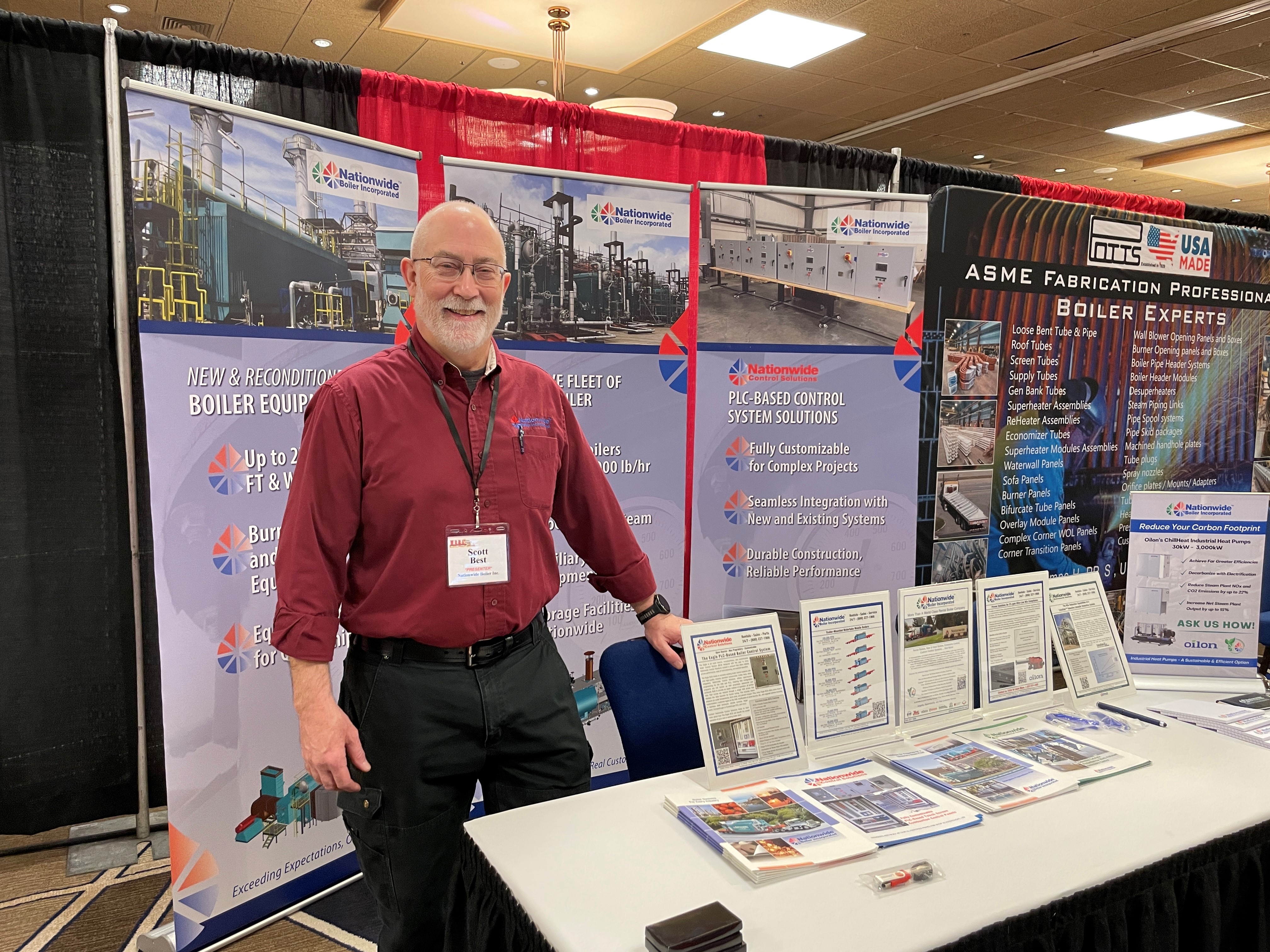As a leader in the boiler industry, Nationwide Boiler understands the value of staying connected with industry professionals, customers, and partners to share insights, discuss advancements, and highlight our vast selection of boiler solutions. Tradeshows and industry events are an essential part of our commitment to delivering the best in everything we do. From boiler rental equipment to package boilers for sale, and custom control systems to emissions control solutions, we strive to provide reliable equipment and real customer service while satisfying the unique needs of each and every client.
With a variety of tradeshows on the schedule for this year, these events allow us to showcase our expertise, introduce cutting-edge technologies, and engage directly with those looking to optimize their operations. Whether you’re interested in rental boilers, custom equipment solutions, or emissions compliance, our team is ready to discuss how we can help meet your needs. Be sure to mark your calendars and visit us at one of the many events we’ll be exhibiting at in 2025!
- IDEA Campus Energy 2025 – February 3-6, 2025
Boston, Massachusetts
A dynamic event bringing together district energy leaders and innovators to explore the latest trends and technologies specifically geared towards colleges and university campuses. With expert sessions and networking opportunities, IDEA Campus is the perfect place to collaborate, learn, and discover new business opportunities.
- Food Processing Expo – February 5-6, 2025
Sacramento, California
A premier event for the food processing industry, featuring the latest technologies, equipment, and innovations. The Expo offers valuable networking opportunities, educational sessions, and insights into trends shaping the future of food production.
- WRBA Conference – March 25-27, 2025
Coeur d’Alene, Idaho
A key event for boiler industry professionals, offering networking, education, and insights on the latest technologies and safety practices.
- Western Turbine Users Conference – March 30 - April 2, 2025
Long Beach, California
A leading conference for turbine industry professionals, offering opportunities for networking, knowledge sharing, and insights into the latest turbine technologies and best practices.
In addition to these major events, we’ll also be attending:
- WSSHE Spring Symposium – April 16-18, 2025
- API Spring Meeting – May 5-9, 2025
- IDEA Annual Conference – June 2-5, 2025
- PRIME Expo – August 19, 2025
As we gear up for a great year ahead, we’re excited about the upcoming events and the opportunity to strengthen our connections within the industry. Follow Nationwide Boiler on the various social media platforms to stay informed about where we’ll be throughout the year, and be sure to visit us at our booth to learn more about how our team can provide solutions that will improve the efficiency and sustainability of your operations.
Connect on LinkedIn: https://www.linkedin.com/company/nationwide-boiler-inc-
Follow us on Facebook: https://www.facebook.com/NationwideBoiler
Find our Instagram: https://www.instagram.com/NationwideBoiler




